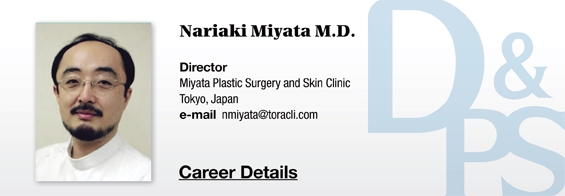
As I have already mentioned a few times in this series, Japanese patients prefer subtle changes and little downtime to more drastic and invasive treatments. Therefore, aesthetic medicine often is limited to photomedical devices and skin care treatments particularly make up a large proportion of aesthetic procedures.
One disadvantage of these types of treatments is that doctors have to compete with cosmetic products and aesthetic salons. Japan’s aesthetic salons offer various treatments including device treatments and even perform strong treatments using the same therapeutic devices as a medical practice. To my knowledge, aesthetitc salons of Korea offer procedures very different from those given at medical practices. In Japan, however, people generally seek aesthetic salons first for an aesthetic procedure. Aesthetic salons face less regulation in advertising, whereas medical practices are more limited in their ability to advertise their treatments (medical practices do, however, advertise in various methods and some even risk getting in legal troubles). Aesthetic salons aggressively advertise that their skin care procedures are just as effective as medical procedures. They do use the same medical devices as doctors and put the doctors at a great disadvantage. As for surgical and injection procedures, etc. doctors do not have to compete with aesthetic salons. On the other hand, the skin care treatments face tough competition.
Some patients think doctors offer safer and efficacious treatments but not many resort to medical institutions for simple skin care. The lower prices offered by aesthetic salons make them a more convenient choice for the consumers.
[Advertisement] MAGNUM(Q-switched Nd:YAG Laser) – Manufacturer: (www.i-dana.com)]
For a long time, chemical peeling was the mainstay of skin care treatments in Japan. From the late 1990s, acne and melasma care using AHA have become popular. These treatments were expensive in the beginning (about JPY 20,000) but the price plummeted with aesthetic salons and private practitioners entering the aesthetic market.
Later, microdermabrasion devices such as crystal peeling with sprayed aluminum oxide or diamond peeling using a suction bar coated with diamond particles were introduced. Various other peeling techniques such as Jet peel that uses strong water currents and salycylic acid Macrogol peel, etc. also came to be used.
Despite the lowered price, peeling is still the mainstay of skin care procedures in Japan. HydraFacial, a device that infuses therapeutic solutions into the skin during microdermabrasion is becoming popular. Another common procedure uses electric resistance to infiltrate ionized particles into the skin. However, the price of this treatment has fallen too low and is not very profitable. In-home ion cleansers have become available and few patients seek a medical practice for this procedure. It is currently used as an after care for another treatment.
Electroporation is another procedure being widely used. It delivers electric pulses to the skin to create micro punctures for easy infiltration of various drugs. Electroporation makes the cell membranes more permeable for various drugs compared to ion or ultrasound delivery. It is particularly suitable for Japanese patients who fear long downtime and strong treatments. However, I doubt that the effects are the same just because you are using the same devices. Theoretically, electroporation creates micro punctures in the skin using a limited range of electric pulse. I am skeptical that a handpiece with such large contact area can, in fact, infiltrate active ingredients into the skin. The efficacy is difficult to assess but I believe more doctors will use electroporation due to efficacy and affordability.
An electroporation device is not limited in terms of electric charge or molecular size, allowing various ingredients to be used. In theory, the drugs are absorbed subcutaneously. Based on this principle, a treatment using fat reducing ingredients has been introduced (I will refrain from criticizing the efficacy of this treatment). Currently, the most frequently used ingredients include hyaluronic acid, collagen (peptide), tranexamic acid, various growth factors, arbutin, and argireline, etc. Collagen is particularly popular in my practice. It may be easier to advertise growth factors, however, patients who desire long-term skin care tend to prefer potent hydrating effects. This treatment may be ideal in Japanese patients who want natural improvements and long-term skin health.
-To be continued-




















